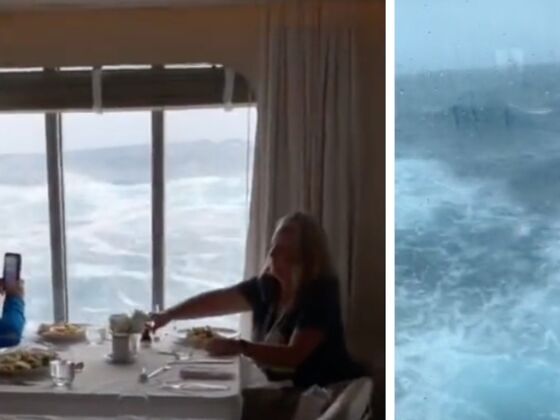The Drake Passage is a body of water between Cape Horn at the southern tip of South America and the Shetland Islands near the Antarctic Peninsula. It’s one of the most treacherous stretches of open water in the world, notorious for its strong winds and large waves, not to mention many icebergs. As Antarctic cruises — including luxury cruises — continue to make the southernmost continent an increasingly popular tourist destination, more people are getting to experience the safe but wild ride that is crossing the Drake Passage.

Extreme Cruising: Crossing Drake Passage to Get to Antarctica Is Truly Wild
@matadornetwork Travelers departing from Ushuaia to get to #Antarctica dread crossing the #DrakePassage, and for good reason. This stretch of ocean between Argentina and the #AntarcticPeninsula is well-known to have the roughest seas in the world. Due to its unique geography, currents at this latitude are able to circumnavigate the globe without interference, leading to monstrous swells and powerful winds; 50-foot waves and 100-knot wind gusts are not rare. On occasion, you might get lucky and experience an unusually calm passage — known as the “Drake Lake” — but more than likely, your voyage will be a rocky one 🌊 Would you dare travel through the Drake Passage to travel to Antarctica? 🎥 @courtneyhana29 📍Drake Passage #antarcticaunlocked #antarcticatok #crashingwaves ♬ original sound – Matador Network
What to expect when you’re crossing the Drake Passage
The Drake Passage’s reputation centers on its roughness. The average wind speed hovers around 20 to 30 knots (23 to 34 mph) with gusts up to 50 knots (58 mph). The average wave height is nearly 10 feet although the waves can get as big as 15 or 20 feet high. Conditions vary, and many travelers report surprisingly anticlimactic crossings, but even still the Drake Passage remains one of the bumpiest boat rides those travelers will likely experience.
One of the best parts about crossing the Drake Passage is all of the incredible wildlife you can see along the way. Because this stretch of water is so remote, few ships travel through it, leaving an abundance of marine life. You can expect to see whales, dolphins, seals, penguins, and a variety of seabirds. If you’re lucky, you might even spot a rare albatross or two.
How to prepare for crossing the Drake Passage
Most vessels that cross the Drake Passage have stabilizers to help minimize the rocking motion, but if you’re prone to seasickness, there are over-the-counter and prescription medications that can help relieve your symptoms. It’s smart to come prepared with motion sickness medication such as Dramamine or Bonine, whether or not you end up needing it. Staying hydrated and eating light meals on the passage can also help with nausea.
It’s also a good idea to pack comfortable clothes and easily transportable entertainment like books, cards, and music for the journey. Crossing the Drake Passage can take anywhere from two to three days, so you’ll want to make sure you bring things to help pass the time.